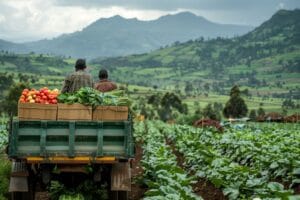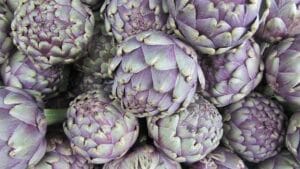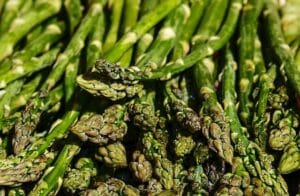Coffee, a famous brewed beverage, comes from the roasted seeds of coffee fruits. People have enjoyed coffee as a favorite drink for centuries, and many countries embrace it. Moreover, there are several kinds, each with its distinct flavor and aroma. Furthermore, coffee is grown as a profitable crop in over 75 nations.
Machines and technology helped improve coffee bean quality and protection. Arabica and Robusta are the famous species of Coffee beans. Brazil is the largest coffee producer in the world, and countries in the African region also grow coffee trees. Below are the countries ranked by total coffee production in metric tons.
1. Brazil
Brazil is the world’s largest coffee producer, and its history dates back 150 years. Every year, it produces around 2.5 to 3 million metric tonnes of coffee. The coffee plantations cover more than 27,000 square kilometers of land. They consist of 74 percent Arabica and 26 percent Robusta.
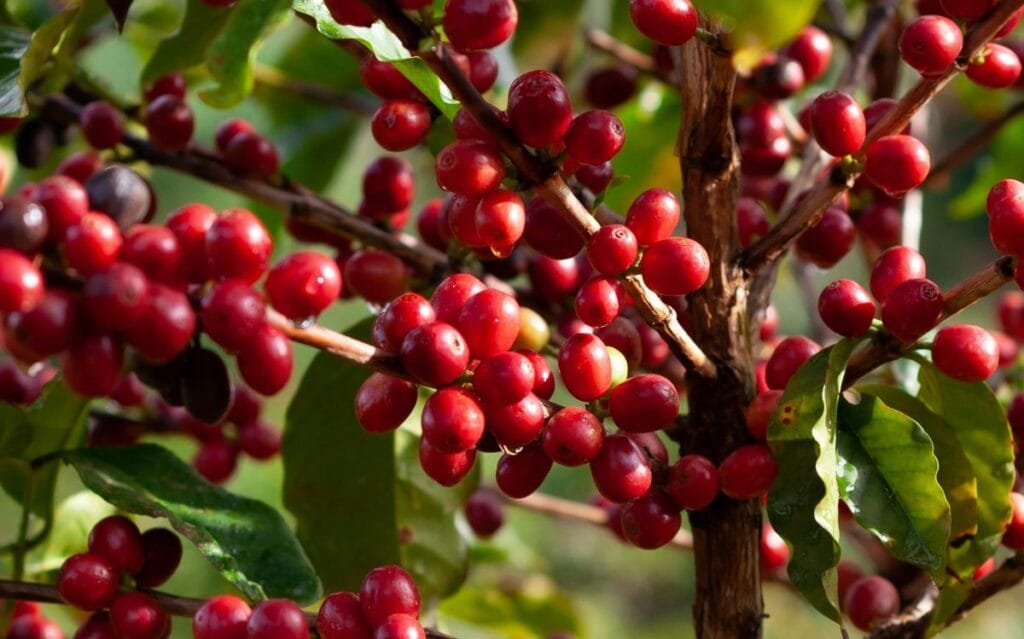
- For more than 150 years, Brazil has been the world’s largest coffee producer, accounting for around one-third of the global coffee supply.
- Coffee Plantations Shaped the Economy: Coffee farming played a significant role in Brazil’s economy at large. This was particularly true in the 19th century when it accounted for 80% of the country’s exports.
- Variety of Coffees: Brazil produces a wide range of coffees, both Arabica and Robusta. These are grown under specific climate conditions in different regions.
- Brazielan Coffee Museum: The Brazilian Coffee Museum is located in Santos, São Paulo State. It serves as a tribute to the glorious history and culture of Brazilian coffee.
- Coffee and Carnival Connection: Brazil’s Carnival is connected to the country’s coffee prosperity. This connection highlights the importance of coffee in Brazilian culture. The great coffee barons of the early 20th century financed much of the culture and art featured in Carnival.
Coffee-growing states in Brazil:
2. Vietnam
Vietnam is the second-largest producer of coffee after Brazil, with a total annual production of around 1,650,000 metric tonnes. Robusta (coffee species) accounts for more than 96% of coffee production in Vietnam.
- Second Largest Producer: Vietnam is the world’s second-largest coffee producer, whereas its mainstay is robusta beans that go for the preparation of instant coffee.
- Unique Brewing Method: Vietnamese coffee uses a traditional method called ‘phin,’ a slow-steeping drip technique that creates a very rich and intense flavor.
- Egg Coffee: A popular Vietnamese specialty, egg coffee combines strong coffee, whipped egg yolk, sugar, and condensed milk, resulting in a creamy, dessert-like drink.
- Coffee and Agriculture: Vietnam is an important agricultural producer of coffee. Coffee farms take up more than 600,000 hectares of the country, although mostly in the Central Highlands.
- Strong Coffee Culture: The vibrant coffee culture is one of the interesting things about Vietnam, where many cafes offer both traditional and modern coffee drinks and have become very social places for locals and tourists as well.
3. Colombia
The coffee originated in Europe, with Colombia being one of the world’s major coffee producers. It sells approximately 810,000 metric tonnes of coffee beans each year to the United States, Germany, France, Japan, and Italy.
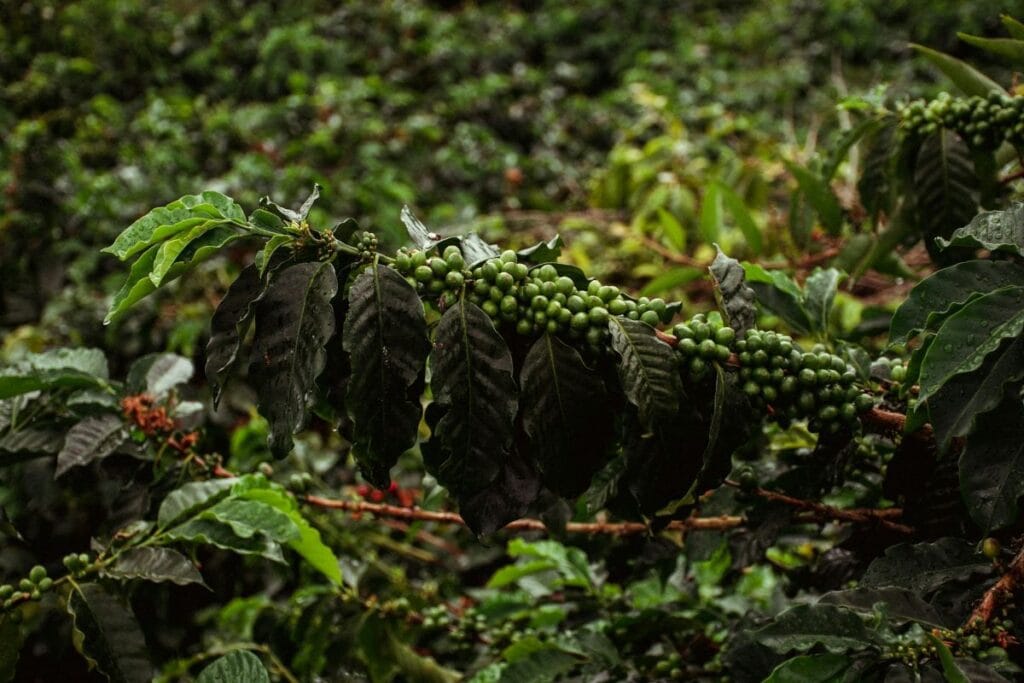
- Arabica Paradise: Colombia is famous for its high-quality Arabica coffee produced in its mountainous regions and, specifically, in the Coffee Triangle.
- Coffee Cultural Landscape: The Cultural Landscape of Coffee Production in Colombia, a region that was declared a World Heritage in 2011, celebrates this history of past ages as well as its landscapes.
- Coffee Farmers: The National Federation of Coffee Growers of Colombia is the organization supporting over half a million coffee growers in the country, ensuring that quality productions come from the farms as long as the farmers get fair prices for their products.
- Coffee Festivals: There are several coffee festivals, like the National Coffee Festival in Manizales, where locals celebrate their harvest with parades and live music.
- Coffee in Daily Life: The average person in Colombia also uses a small cup called “tinto” throughout the day.
4. Indonesia
Indonesia is the 4th largest coffee producer in the world; notably, most of the coffee producers are small farmers, averaging about 2 hectares of land. In addition, this country produces around 660,000 metric tonnes of coffee per year. Furthermore, it exports coffee to the US, Eastern Europe, Japan, and Russia.
- Diverse Coffee Varieties: They have a diversity of coffee types, including sumatra, Java, and Sulawesi, each unique in flavor and taste.
- Luwak Coffee: Kopi Luwak: Kopi Luwak is known as one of the most expensive and rare Indonesia coffee beans that are digested and excreted by civets. Their characteristic flavor is smooth.
- Bali Coffee Culture: Bali’s Coffee Culture: Bali is full of great coffee culture, providing many local cafes serving locally brewed coffee from traditional roasting methods. It has also grown to be a new destination for every coffee fan.
- Rainforest Growth: Indonesian Rainforest Grown: Farmers typically grow Indonesian coffee in rich, active volcanic soil, shaded by rainforest trees, which enhances its flavor profile.
- Historical Influence: Historical Influence: Coffee production in Indonesia began in the 17th century when the Dutch introduced it, and it quickly became one of their major exports.
5. Ethiopia
Ethiopia is the main producer of coffee in the African continent, and many farmers rely on it for a living. The entire area of coffee cultivation spans approximately 4,000 square kilometers. It yields a total of 384,000 metric tonnes annually.
- Birthplace of Coffee: It is said that the origin of coffee began in Ethiopia, traced from a goat herder called Kaldi.
- Diverse Varieties: Ethiopia harbors several Arabica bean varieties, with the country’s exceptional biodiversity and diverse altitudes responsible for the varied flavors.
- Coffee Ceremonies: It is a common cultural ritual in which one roasts green beans, brews coffee, and serves it in cups with some sort of snacks on the side.
- Heirloom Coffees: Many heirloom varieties are produced in Ethiopia and often grown wild, so Ethiopian coffee is high on the list of connoisseurs.
- Coffee as Culture: Coffee plays a prominent role in Ethiopian culture and social life. People often share coffee as a way to come together, symbolizing hospitality and friendship.
6. India
India is experiencing some of the most serious coffee-related issues, including early-season rainfall and other natural calamities. Coffee is only grown in the South Indian states of Karnataka, Andhra Pradesh, Tamil Nadu, and Kerala, with a total annual production of around 348,000 tonnes.
- Diverse Coffee Production: India is renowned for its Arabica and Robusta coffees, with most Arabica grown in the southern regions. The overall climate of the central and southern states also supports the cultivation of Robusta.
- Monsooned Coffee: India is also famous for “Monsooned Malabar,” – with the beans exposed to monsoon winds, resulting in a distinct flavor profile, which is also smooth and earthy.
- Coffee Plantations: Indian regions like Coorg and Chikmagalur are known for their picturesque landscapes and coffee plantations. These areas have become popular destinations for coffee tours.
- Coffee Day: It is worth mentioning that India had declared a National Coffee Day on September 29 to celebrate the importance of coffee for Indian culture and economy.
- Cultural Influence: Historically, the consumption of coffee has held a deep place within Indian culture. Local beverages such as “filter coffee” dominate the taste buds, more so in South Indian homes.
7. Uganda
Uganda is one of the developing nations in Africa, and its coffee production is increasing continuously. Currently, it’s producing around 288,000 metric tonnes of coffee beans.

- Home of Robusta: One of the world’s largest producers of Robusta coffee, Uganda has been claimed to be the origin of the coffee plant.
- Coffee Economy: Coffee is Uganda’s most important cash crop. It is the source of income to many millions of farmers and brings a great deal of foreign exchange to the country in its export earnings.
- Unique Flavors: Ugandan coffee is known for its rich, complex flavors, often described as fruity and full-bodied. These characteristics reflect the diverse conditions in which it is grown.
- Traditional Brewing: Traditionally, Ugandans brew coffee using a method called ‘kaffa’. The coffee is roasted, ground, and steeped in water, producing a very strong, flavorful drink.
- Cultural Significance: Coffee has played an important role in Ugandan culture, often being served at social events and ceremonies. The act of drinking coffee has come to symbolize hospitality and friendship.
8. Mexico
Mexico ranks as the world’s seventh-largest coffee producer, with an annual output of 252,000 metric tonnes. It exports coffee while also meeting domestic demand. Arabica is the most widely cultivated species in Mexico, followed by Altura, Liquidambar MS, and Pluma Coixtepec.
- Diverse Growing Regions: Most of Mexico’s coffee is produced in the southern states of Chiapas, Veracruz, and Puebla. These regions offer a favorable climate for cultivating high-quality Arabica beans.
- Organic Coffee Leader: Mexico is part of some of the biggest producers of organic coffee. Most of its farmers prefer sustainable production of crops to match international demands.
- Café de Olla: Mexican traditional coffee is “café de olla,” a mixture of coffee, cinnamon, and piloncillo – raw sugar. its often brewed in clay pots.
- Cultural Heritage: In Mexico, the production of coffee started in the 18th century and plays an important role in the cultural and economic identity.
- Coffee Export: Mexican coffee has high standards in terms of quality, whereby the blends always feature in specialty. The country is a key exporter to the United States and Europe.
9. Guatemala
The country’s geography and climate are ideal for coffee cultivation. Coffee farming began in 1850, and it is still increasing today with adequate areas. The country’s coffee production is around 234,000 metric tonnes per year.
- Coffee Quality: Of course, Guatemala is the country with the finest quality Arabica coffee, originating from regions such as Antigua and Huehuetenango.
- Distinct Flavor Profiles: Guatemalan coffee is celebrated for its unique flavor profiles, often described as full-bodied with bright acidity and notes of chocolate and fruit.
- Fair Trade Practices: Guatemalan coffee farmers join the cooperatives of Fair Trade for fair wages, sustainable practices, and the growth of a community.
- Café de Guatemala: Traditionally, in the gourmet world, ‘Café de Guatemala’ refers to coffee originating from Guatemala. It holds a protected designation of origin, ensuring its quality and authenticity.
- Cultural Heritage: Coffee farming has a deep-rooted tradition in Guatemala. People still practice it, especially in indigenous areas, based on traditional methods and rituals.
10. Peru
Peru, located in South America, ranks as the world’s fifth-largest exporter of Arabica coffee, a highly regarded coffee species. Peruvian coffee production grows year after year, with a total annual output of over 220,000 metric tonnes.
- High-Quality Arabica: Known for quality Arabica coffee in the high areas of the Andes Mountains. Peru accounts for most of the country’s coffee grown.
- Organic and Fair Trade: Peru is among the largest organic producers of coffee. The large number of farmers has resulted in higher use of sustainable practices and Fair Trade schemes.
- Café Peruano: Peruvian coffee offers a mild taste with balanced acidity and floral notes. These qualities make it highly favored by those who appreciate such flavors.
- Diverse Growing Regions: The major coffee-growing regions in Peru are Cajamarca, Cusco, and Junín. Each region has a distinct flavor due to its climate and soil variations.
- Cultural Significance: Coffee is an integral drink in the culture of Peru. Local traditions regarding growing and making coffee discuss the heavy farming history in the country.
Note: The ranking of countries by coffee production can change frequently due to climate change and variations in crop yield.
List of coffee-growing countries by total production (largest to smallest)
| Country | Production in Tonnes |
|---|---|
| Brazil | 3,172,562 |
| Viet Nam | 1,953,990 |
| Indonesia | 794,762 |
| Colombia | 665,016 |
| Ethiopia | 496,200 |
| Uganda | 393,900 |
| Peru | 352,645 |
| India | 338,619 |
| Honduras | 315,490 |
| Central African Republic | 306,901 |
| Guinea | 261,645 |
| Guatemala | 225,500 |
| Mexico | 181,706 |
| Lao People's Democratic Republic | 171,000 |
| Nicaragua | 170,181 |
| China | 108,886 |
| China, mainland | 108,000 |
| Costa Rica | 79,200 |
| Côte d'Ivoire | 70,000 |
| United Republic of Tanzania | 67,200 |
| Democratic Republic of the Congo | 58,837 |
| Philippines | 58,285 |
| Venezuela (Bolivarian Republic of) | 57,177 |
| Kenya | 51,900 |
| Madagascar | 50,316 |
| Papua New Guinea | 40,800 |
| Yemen | 36,482 |
| El Salvador | 30,653 |
| Cameroon | 26,371 |
| Togo | 25,132 |
| Bolivia (Plurinational State of) | 23,239 |
| Dominican Republic | 20,577 |
| Rwanda | 18,945 |
| Thailand | 18,689 |
| Burundi | 17,220 |
| Angola | 16,767 |
| Timor-Leste | 11,674 |
| Malawi | 11,000 |
| Myanmar | 8,880 |
| Zambia | 8,643 |
| Jamaica | 8,627 |
| Ecuador | 7,966 |
| Panama | 7,500 |
| Cuba | 6,252 |
| Haiti | 5,066 |
| Sri Lanka | 4,828 |
| Equatorial Guinea | 4,119 |
| Malaysia | 3,850 |
| Congo | 3,119 |
| Sierra Leone | 2,580 |
| United States of America | 2,400 |
| Nigeria | 1,876 |
| China, Taiwan Province of | 886 |
| Puerto Rico | 843 |
| Mozambique | 816 |
| Ghana | 736 |
| Trinidad and Tobago | 681 |
| Zimbabwe | 661 |
| Liberia | 654 |
| Guyana | 600 |
| Cambodia | 374 |
| Dominica | 370 |
| Nepal | 355 |
| Paraguay | 341 |
| Saint Vincent and the Grenadines | 180 |
| Comoros | 141 |
| Gabon | 104 |
| Belize | 90 |
| Benin | 55 |
| Cabo Verde | 47 |
| Vanuatu | 36 |
| French Polynesia | 21 |
| Tonga | 15 |
| Fiji | 14 |
| Samoa | 12 |
| Sao Tome and Principe | 8 |
| Suriname | 6 |
| New Caledonia | 2 |

